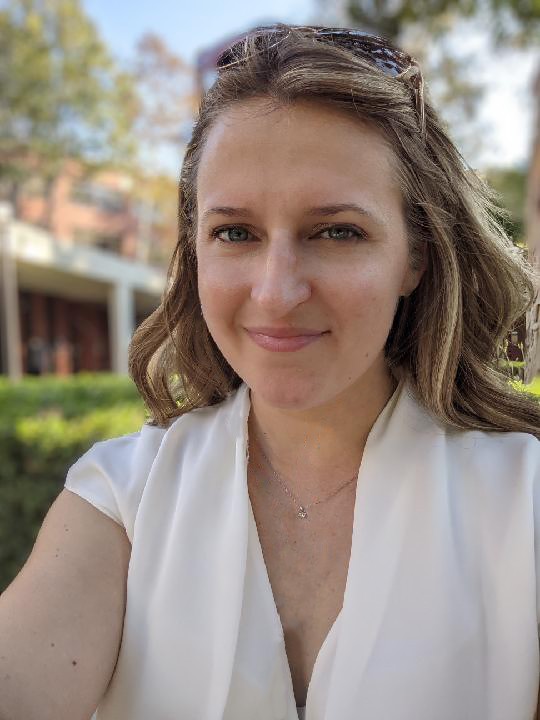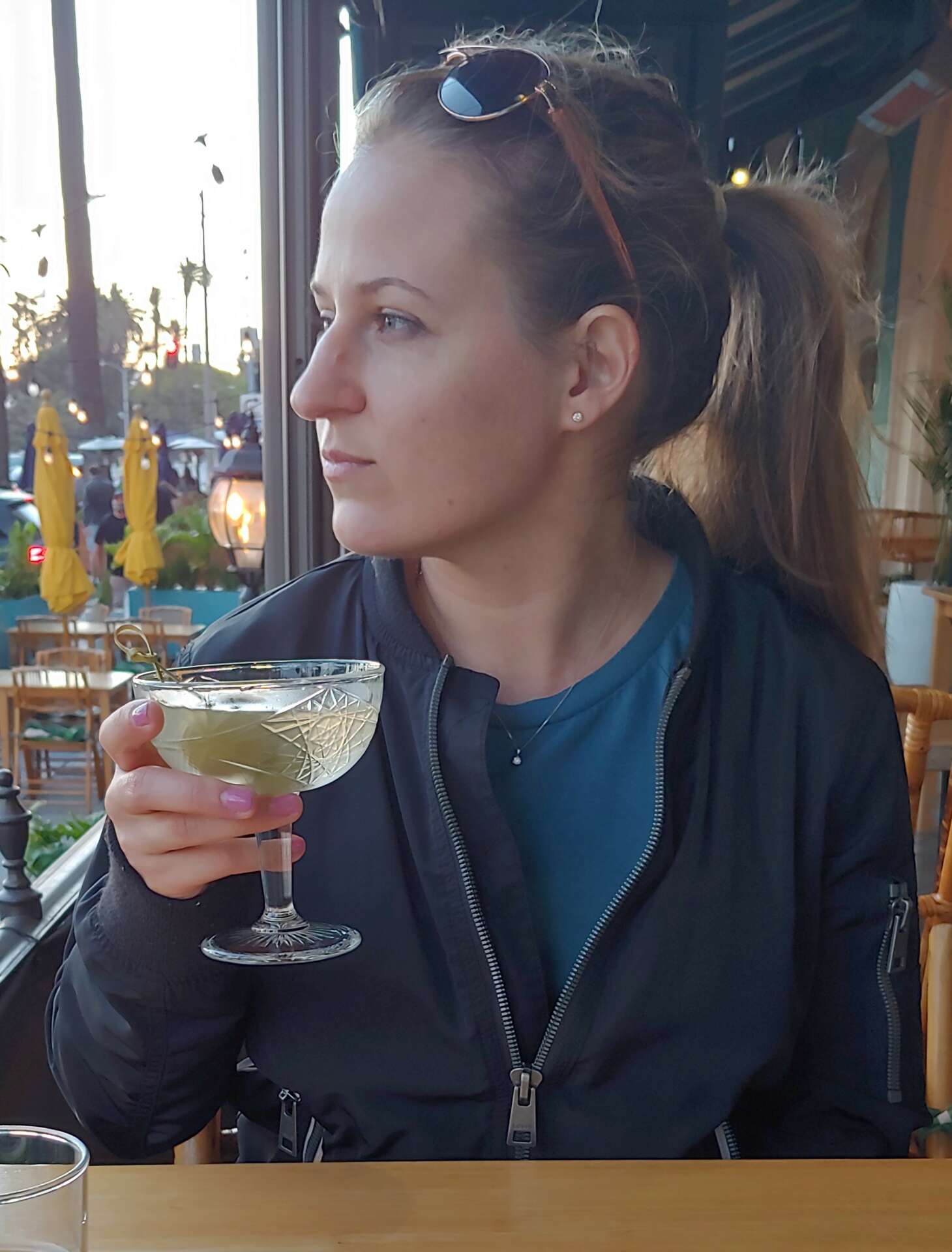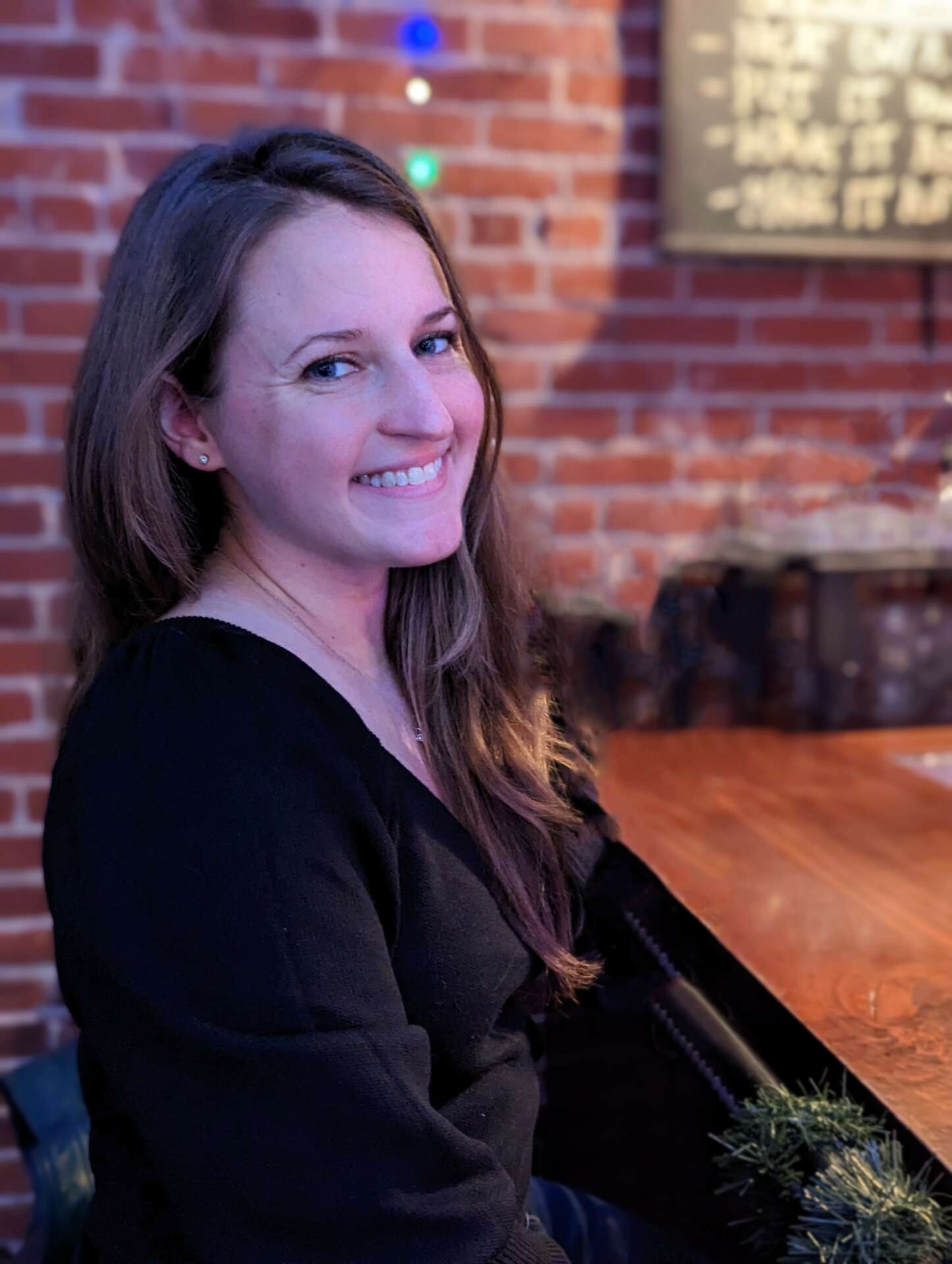We were lucky to catch up with Chrysa Kovach recently and have shared our conversation below.
Chrysa, thanks for taking the time to share your stories with us today Can you talk to us about a project that’s meant a lot to you?
In August 2020, I began co-facilitating the Cochlear Implant (CI) Music Hour as part of my master’s degree program in Community Music at the University of Southern California. The CI Music Hour is an initiative of the USC Keck School of Medicine’s Bionic Ear Lab, which studies speech comprehension, pitch perception, music appreciation and the way sound signals are processed in cochlear implants. The CI Music Hour was created so that cochlear implant users had a space for music appreciation and engagement. Cochlear implants do not process complex sounds like music very well, and the listening experience can vary greatly depending on the individual circumstances. The group had a few in-person meetings in March 2020 before the COVID-19 pandemic forced it online, which helped expand the reach of the program from mostly Southern California CI users to CI users in ten (and counting) different states and two additional countries. Each week, the CI Music Hour hosts a guest to share an instrument, genre, or other topic of interest to the group to learn about and practice listening together. We compile the real-time reactions and observations from the group sessions and use this information to develop research studies and specific practice resources for CI users as they rehabilitate their listening abilities. Over the last three years, we have hosted over 100 musicians, composers, audiologists, dancers, and hearing loss advocates for presentations with our group.
Co-facilitating the CI Music Hour has easily been the most meaningful project I’ve been a part of in my career. Programming music content for a group of people with hearing loss trying to regain a satisfying listening experience was incredibly intimidating when I started; I have normal hearing and I was afraid of causing more pain or frustration by programming something “wrong.” As time passed, I got to know each member better, and had the privilege to learn about their hearing journeys. Some people had hearing and lost it, while others were born profoundly hard of hearing and were hearing clearly for the first time through cochlear implants. There were so many variables, so many stories of frustration and isolation, and lots of questions and uncertainty in these conversations. One woman even wondered if she would have been more involved in Vietnam War protests had she been able to hear the music of the era. Of all the emotions and experiences shared in individual conversation or in the full group sessions, the importance of connection between similar-hearing individuals and the desire to keep trying for improvement were always present. Against the backdrop of the pandemic, the importance of connection with others was magnified, and working with this group every week was my dose of hope during an otherwise bleak time of universal isolation. For me, the CI Music Hour and all its members continue to provide lessons of resiliency and understanding. Regardless of the role we have in the CI Music Hour, we are all determined to find the joy in music.

As always, we appreciate you sharing your insights and we’ve got a few more questions for you, but before we get to all of that can you take a minute to introduce yourself and give our readers some of your back background and context?
Hello! I’m a community music facilitator originally from Cleveland, Ohio. What is a community music facilitator, you may ask? Generally, I like to say it’s someone who teaches group music outside of a K-12 classroom setting. Drum circles at retirement communities, a prison choir, the jam band in the park; those are all examples of community music projects. I’ve enjoyed a varied professional career so far, providing services like designing and implementing a multigenerational community orchestra, a semi-professional brass band, and a youth orchestra, creating bilingual hybrid preschool music curriculum for a children’s museum, and curating playlists for music studies on memory and nostalgia. I am an active flutist and conductor, performing with classical, pop, and rock outfits and conducting youth and community ensembles. I am also a grant writer, because funding is all too often the deciding factor behind whether a project goes or stalls.
When I was a child, music making was presented to me as a group, communal experience. My earliest musical memories are trying to sing along in church and attending the Cleveland Orchestra’s Fourth of July concerts with my family. Singing along in church was an active sound exploration into my own voice alongside others, while watching the orchestra was a passive reinforcement that music is better together. I was very fortunate that my school had a music program, and when the time came, I was so excited that I could join the band because I equated being in that group with being like the Cleveland Orchestra onstage, sound and skill level notwithstanding. I’ll never forget coming home from school after the first day of band class and practicing the only two notes I’d learned for hours (special thanks to my family for tolerating my zeal for D and E-flat that day). As I progressed, my mom would remind me that learning music was a special privilege and to work hard, because not everyone had music class in school and not everyone could afford lessons on their own. She had wanted to play flute as a child, but it was an unaffordable luxury in a single-parent household.
The idea of privilege and accessibility in music became foundational in my work as a musician because I wanted to help remove barriers to participation. It frustrated me that this great activity, central to so much of our cultural histories and traditions, so integral to human nature, was not readily available for anyone to participate. Thankfully, a variety of developments have been made in the last decade towards improving access points to music education. This includes everything from the availability of YouTube lesson content and WiFi access all the way to state legislatures approving budget measures that guarantee funds for public school art programs. Financial barriers to participation are still prominent, and nonprofit arts organizations nationwide work tirelessly to tackle this. As a grant writer, I am always looking for new funding connections that significantly lower the financial barrier or remove it entirely for people to pursue the music education they desire. Accessibility in my work also includes supporting individuals with disabilities. All new programs and collaborations use the universal design for learning framework to ensure that a flexible learning environment that can accommodate individual learning differences is created. Community music is a wonderfully customizable education area driven by participant-directed learning opportunities, and I am grateful that I can work with others towards an accessible, equitable future in this space.

What can society do to ensure an environment that’s helpful to artists and creatives?
As a society, we need to wholeheartedly accept how much creative endeavors enrich our lives. To achieve this, I believe we need to support a positive feedback loop between two connected actions: fair payment to career artists and increased arts participation at all levels. Dismissive stereotypes of creative endeavors as “just a hobby, not a job” are self-destroying, negative feedback loops that undervalue the arts we consume and discourage people interested in pursuing creative avenues. According to the Arts & Economic Prosperity III report by Americans for the Arts, the nonprofit arts and culture industry generates national revenues of over $166 billion annually, with most of those dollars staying in the community where they were generated. Artistic products articulate and define who we are individually and as a society, whether it be the favorite movie we watch and still laugh at every time, or the styles and colors of clothes we want to wear, or the music we dance to at celebrations. It always struck me as ironic that people would be so dismissive of an artistic/creative career path in one breath and then talk at length about how this one song reminded them of a special moment in their life: if there are no creative careers, there are no special moment songs, no new fashion trends, and certainly fewer things to experience that emotionally move you one way or another. In short, pay your artists: they help you decorate your daily life and generate economic activity in the United States that exceeds the annual GDP of sixteen countries.
Loud and proud arts participation is the other primary component in the positive feedback loop. Find something artistic to try and give others space to encourage you or even join you. The idea that everything we do must be profitable harms us all (see: “just a hobby, not a job” mindset); it takes away the space for failure and for fun. Try singing in a folk choir! Take a pottery class! Hire an improv group for your next corporate team building event! Demonstrating to others that we value taking a 30-minute piano lesson every week or love our monthly painting class might be the motivation someone else needs to get out there and try something. It also supports the artists and folks running programs in the community by promoting their work and demand for the services, thus completing the loop.
People turning to all sorts of artistic activities during the COVID-19 pandemic and the demand for arts programming post-pandemic is a good indicator, I think, that society is revaluing creative endeavors and moving in a positive direction. Art making is a technology of self-regulation in times of uncertainty and isolation, and amidst the trauma of lockdowns and loss, we needed to make sense of our emotions. It was a time to try or perhaps return to art making on your own time and own terms. I currently work at a community music school, and the demand for lessons, group classes, and ensembles has exceeded pre-pandemic enrollment levels by almost 40%. Arts participation in any discipline and at any level challenges the individual to question, explore, and respond in a deeply personal way. The increasing desire for creative participation also lends itself to stronger communities through creative placemaking. We all win with a collective, empowered, and valued arts ecosystem.
What’s the most rewarding aspect of being a creative in your experience?
To me, the most rewarding aspect of what I do is helping people along their musical journeys. If I were a video game character, I’d probably be the one who pops up throughout the game as a guide with a cool item or useful information for your quest. After I completed my flute performance degree, I struggled to find my own spot in music. I had been perfectly happy performing (and still enjoy it), but I wasn’t a full-time performer; I taught, but I wasn’t a traditional classroom music teacher. The musician’s binary of playing or teaching didn’t quite fit, and this mentality was something that I needed time to unlearn. Working at a community music school made sense to me, though. Having each day look a little different and organizing all sorts of classes and ensembles gave me space to try new things and thrive by being accessible and adaptive. Realizing that facilitation was my superpower was so clarifying and this artistic role gives me the space to pay the joys of music making forward. The encouragement factor is huge; I find so many people want to try something musical but are looking for an external factor to be that spark to start. Opportunity ties into this, too; sometimes the spark is being a simple “yes” after someone has received a chorus of “no” previously. I am thankful that as an artist, I can be that encouragement or that “yes” and create space for others to explore their creative musical interests, and I always strive to be that helpful guide!
Contact Info:
- Other: https://sites.usc.edu/bionicearlab/the-ci-music-hour/ https://sites.usc.edu/bionicearlab/files/2023/04/The-CI-Music-Hour-Building-community-and-promoting-well-being-through-music-appreciation.pdf
Image Credits
Costa Nicholas


